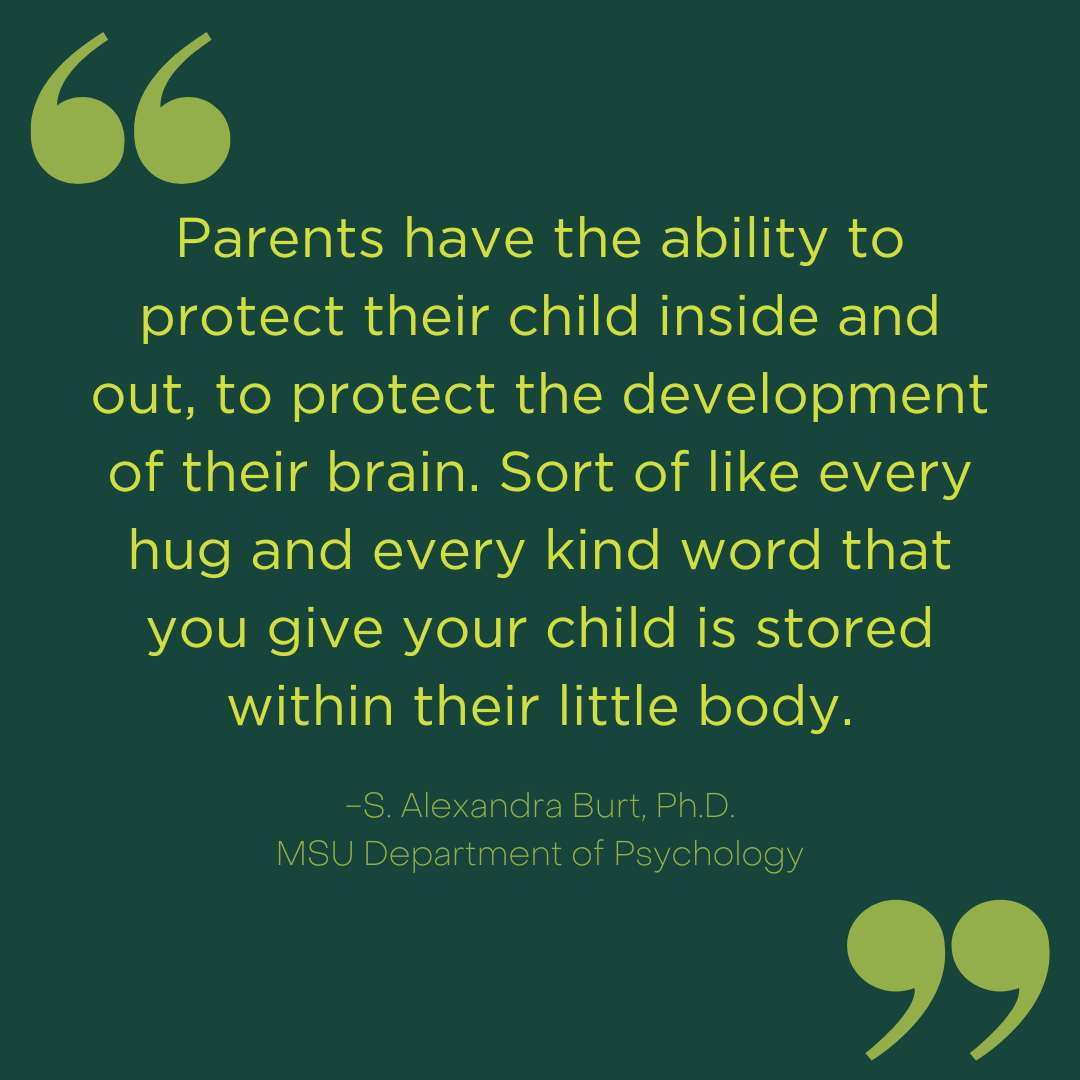Ask the Expert: Disadvantaged Neighborhoods and Mental Health
May 20, 2024 - Shelly DeJong
 Dr. S. Alexandra Burt is the inaugural SSC Diamond Distinguished Professor in the College of Social Science and the Department of Psychology. She specializes in clinical psychology. Much of Dr. Burt’s research focuses on illuminating and understanding the role of neighborhood disadvantage in youth mental health, and specifically how neighborhood conditions shape behavioral and brain development. She is equally interested in understanding how it is that some youth continue to thrive despite exposure to high levels of disadvantage. As part of her work, she co-directs the MSU Twin Registry with Dr. Kelly Klump.
Dr. S. Alexandra Burt is the inaugural SSC Diamond Distinguished Professor in the College of Social Science and the Department of Psychology. She specializes in clinical psychology. Much of Dr. Burt’s research focuses on illuminating and understanding the role of neighborhood disadvantage in youth mental health, and specifically how neighborhood conditions shape behavioral and brain development. She is equally interested in understanding how it is that some youth continue to thrive despite exposure to high levels of disadvantage. As part of her work, she co-directs the MSU Twin Registry with Dr. Kelly Klump.
How do parenting and exposure to violence affect an adolescent’s brain?
Studying neighborhood effects is a lot trickier than it might seem because the neighborhood is actually a really complex thing with lots of elements. Are there enough trees? Are the neighbors nice? Is it safe? Is the air clean? Are the schools good? What kind of infrastructure does the neighborhood have – places of worship, grocery stores, etc. Given these complexities, we need to identify the specific features of neighborhoods that seem to matter most and then determine what exactly they do inside the body. Although we have plans to look at other features in the future, right now, we’re looking at exposure to community violence and parenting as two key factors inside the broader neighborhood context.
Exposure to community violence, for example, negatively affects behavioral and brain development in many ways. We showed this in our work, as have other research teams. But our team, led by UM graduate student Gabby Suarez, also found that exposure to protective parenting buffered the effect of community violence exposure on the brain. Basically, we found that parental nurturance protected the brain from the negative effects of community violence. We thought this was exciting, in part because it clearly advances our scientific understanding of neighborhood effects, but also because most people on our research team are parents themselves. So, it was exciting to see that there are concrete things that parents can do to protect kids and their brains from the hard stuff they might encounter in the world. Of course, research had long ago established that nurturing your child is good for them, but now we know more about why. Parents have the ability to protect their child inside and out, to protect the development of their brain. Sort of like every hug and every kind word that you give your child is stored within their little body. As a parent, I love that.

Can you talk about your research on under-resourced neighborhoods' impact on mental and physical health?
It's long been known that growing up in under-resourced neighborhoods can be harmful to children’s mental and physical health. My research focuses on understanding why that is true—and equally, why some kids growing up in under-resourced neighborhoods survive and thrive regardless. Basically, I’m asking the how and the why questions to determine what might be driving the effects of neighborhood conditions on kids’ health.
As part of this work, we're looking at what we call the “biological embedding” of neighborhood disadvantage, or the process by which early life experiences alter underlying biology with downstream consequences for health and well-being. One key question we are asking is: does neighborhood disadvantage shape the development of the brain? And if so, how? To answer these questions, Dr. Luke Hyde (professor at University of Michigan) and I are conducting structural and functional imaging studies that examine how neighborhood conditions affect the developing brain. Dr. Shaunna Clark (professor at Texas A&M), Dr. Hyde, and I are adding to this study by also examining neighborhood effects on methylation. Methylation is a type of epigenetic modification that changes DNA without altering the underlying DNA sequence itself. These kinds of modifications are thought to play a key role in regulating gene expression, among other things. Our overall goal with this work is to determine how neighborhood conditions get ‘under the skin’ to affect biological and behavioral outcomes over the first 20 years of life.
Why do you work with the MSU Twin Registry for your research?
A particularly cool feature of our research design is that we collect all of these data in twins. Identical twins have the same DNA, but they do not have the same methylation profiles. This allows us to more conclusively identify environmental effects on the methylome because we know they are not genetically based in this case. The usefulness of this design rests on the fact that identical twins have the same parents, the same DNA, are the same age and sex, have the same physical traits, and so on. They have all these things in common, and yet we see differences in their methylation profiles. Neural structure and function are very similar in that regard. Folks might assume that identical twins’ brains should look the same, but they definitely do not. We also typically compare the similarity of identical twins to that of fraternal twins to further strengthen our conclusions. Because of these features, twin studies function as quasi-experimental designs – they allow us to make much stronger causal inferences than we would otherwise be able to do. That's the reason we do the extra work involved in recruiting twins. If you want to unambiguously identify how the environment shapes behavioral and mental health, and I do, twins are the ideal research participants. They get us as close as we can get to experimental causation when trying to answer our specific kinds of questions.
What are the next steps of your research?
I’m also working with a geographer over in MSU's Department of Public Health, Dr. Amber Pearson, to do a deep dive into the conditions of neighborhoods. There are just so many potentially relevant features that might be important. Some neighborhoods might be negatively affected by highway noise and pollution, or by toxic exposure from an industrial plant. Others might be in economic decline but have a strong sense of community that protects those who live there. Others might have great parks that offset the effects of nearby traffic. There are just a lot of potential variables. So, we need to identify the ‘active ingredients’ of neighborhoods for children’s behavioral and brain development. What are the specific neighborhood features that are negatively affecting kids? And even more importantly, what are the specific neighborhood features that protect kids? We think that is information that local governments might really like to have.
What advice would you have for city leaders at this stage of your research?
There is already good data on the physical and mental health benefits of green space and blue space or water views. The auditory environment is also key – are you hearing the sounds of cars or the sounds of birds? Dr. Pearson has work indicating that the latter is a lot better for you. So, the more we can encourage park restoration and adding green places to support the migratory pattern of birds, the better. Available data suggests that these things may have tangible benefits for residents, and that at least some of these benefits may trickle down to subsequent generations. It’s great to focus on making big changes, but we think that even small ones, like revitalizing parks, may protect the next generation of children. We should have more concrete evidence of this in the next few years.

